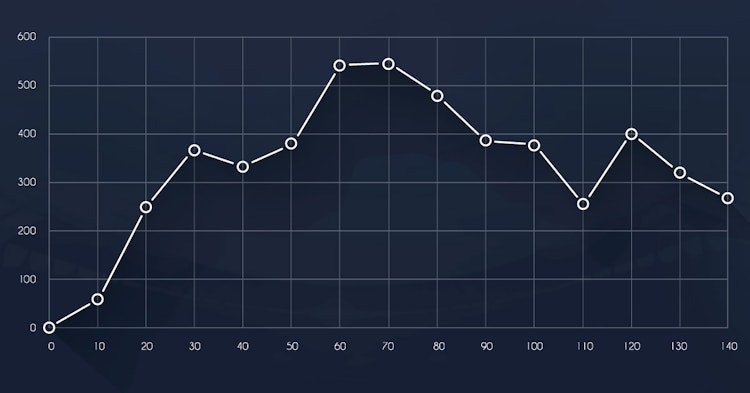Stats That Matter: Making Of A BBL Champion
Last updated: Dec 14, 2021, 3:51AM | Published: Dec 14, 2021, 1:02AM
We’re into the 11th season of the Big Bash League and the cricket only seems to be getting stranger.
There’s volatility in results, the quality of cricket has been average and the aura that once surrounded the league isn’t what it used to be.
Still, many of us consume our nightly injection of the BBL regardless of our current feelings and we’re all still trying to figure out which teams are good and which aren’t.
After 10 full seasons of the competition, it does beg the question, what makes a winning team?
RELATED: Check out all of Stats Insider's BBL season projections
So far, we’ve seen the Perth Scorchers and Sydney Sixers win the competition three times each, while the Adelaide Strikers, Brisbane Heat, Melbourne Renegades and Sydney Thunder have all saluted once.
Hobart has been runner-up twice and the Stars thrice, having only missed the finals on two occasions.
There are two key words that encapsulate the successes of these teams, particularly the two dominant forces in the Scorchers and Sixers; stability and consistency.
The nature of a T20 competition that brings in international players and is played concurrently with international fixtures is that there simply must be rotation throughout a squad.
In recent seasons, we’ve had more games squeezed into the season, more international spots available and even new rules.
At the same time, we’ve had the advent of the Pakistan Super League, the Bangladesh Premier League and even the T10 league that have overlap with the BBL, further impacting the international players’ availability, or even willingness to sign with an Australian franchise.
Yet through all of these changes the Sydney Sixers have won two tournaments in a row with the exact same underlying theme that brought success to every other franchise over the last decade, all the way to their own initial win in BBL|01 – stability and consistency.
Winning the tournament isn’t necessarily about having the most prolific star of the competition, as many would have assumed in the fast-paced, bright-lights action of T20 cricket.
RELATED: BBL|11- Getting To Know The New Overseas Signings
Having even contributions across the board with clearly defined roles goes a long, long way to winning a tournament, so much so that it’s become quite an obvious pattern.
Only once in the 10 completed tournaments to date has the champion had the player that finished with the most runs in the competition, despite the fact the finalists have mostly played more games than any other team.
Michael Klinger scored 326 runs at 36.22 in BBL|04, 33 runs clear of Kevin Pietersen who played two less games.
Bowling wise, the champion has had the bowler with the most wickets on just three occasions – the Thunder in BBL|05 with Clint McKay, the Strikers in BBL|07 with Rashid Khan first on averages and the Renegades in BBL|08 with Kane Richardson.
Every champion-to-date has had an effective game-plan that’s relied on every player knowing their roles and executing specific plans.
It’s why coaches like Greg Shipperd, Trevor Bayliss and even pre-Australia Justin Langer have had great success in the tournament due to the initial simplicity in their game-plans.
Statistical comparisons between BBL|01 and more recent tournaments are almost futile given how new franchise T20 cricket was to Australia, yet clearly, economical bowling has been the key feature of success, with only the Sydney Thunder’s success last season proving to be different.
Even using the last five tournaments as our baseline for comparative purposes, the level of consistency across an entire playing group is so evidently important that it behoves new coaches to place greater emphasis on it.
BBL|06 saw the Scorchers win with only two players conceding more than 7.67 runs per over and the entire season featured just two ducks.
Adelaide’s BBL|07 victory had four players score at least 277 runs and 5 players finished with more than 10 wickets.
In the following season, the Renegades had five players with more than 220 runs, four players with at least 10 wickets and no regular player conceded more than 7.75 runs per over, an incredible achievement through 8 bowlers.
The BBL|09 version of the Sixers had four players with at least 267 runs, five players with over 10 wickets, while last season, they had five scorers over that many runs, four players with 10 wickets or more and astonishingly, every single regular batsman had a strike rate of over 131, never before seen and the runners-up, the Scorchers, had very similar numbers.
RELATED: Are The Melbourne Renegades Ready For Redemption?
Of course, the old cricketing adage that any team can win on any given day is as relevant as it is overstated.
The art form of T20 cricket however is the ability to remove as much volatility and unpredictability as is controllably possible, in order to maintain a strong level of stability and consistency across an entire playing group.
When recruiting international stars to bring into Australian conditions, we’ve seen that if the expectation is for these players to stand up in key moments, that is a far more reasonable usage of their talents rather than expecting them to be prominent.
James Vince’s 860 runs over the last two BBL campaigns have been among the league’s best, but it was the timing of his four 50s in BBL|10 that had the biggest impacts.
Look no further than Adelaide and Rashid Khan at the moment, where the entire bowling attack rests on his shoulders as their star international, yet it’s an easily identified avenue to either sit on or exploit for the opposition.
There are a lot of uncontrollable aspects of cricket, whether it be the conditions, the ground, the coin toss, even quarantine expectations in this day and age.
Yet the key to success in the BBL has always remained the same thanks to the strong coaches involved and the nuanced and strategic analysis that goes into the game.
Pick the right, committed players, have clearly defined roles and expectations laid out and most importantly, emphasise the importance of keeping things simple.
The strategy works and the numbers are there to back it up.
If a team wants to win BBL|11, they must simply look for stability and consistency, rather than at the highlights reel.
Did you enjoy this article? Join our free mailing list to get the best content delivered straight to your inbox, or join the conversation by leaving a comment below or on the Stats Insider Twitter or Facebook page.



